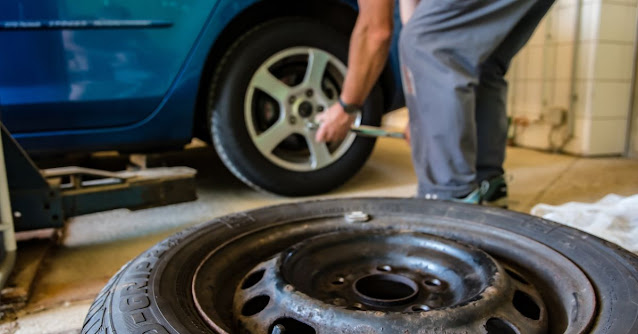What are the reasons for tyre degradation?
What happens if you leave a set of tyres sitting for years, never letting them turn on their own, and leaving them to fight the weather? You might face many problems with your tyres, don't wait to degrade them completely and visit us for more information about tyres in Hawkesbury.
Since your car's tyres are the only part that touches the road, it's safe to say that you should never take them for granted or forget about them. When you think about how much those rubber circles have to go through every day, it's not hard to see that they will wear out over time. Even when a car is just sitting in a driveway, the tyres can wear down and crack to the point where they are no longer usable. You've all seen that one classic car in your neighbourhood that hasn't been driven in years, with tyres that used to be full of life but are now flat, cracked, and sunk into the ground.
So, what makes tyres get to that point of wear and tear? Let's start with a basic overview of how a tyre is put together. Rubber is the main ingredient, but there are also layers of metal beading that make the walls of the tyre stronger while still letting the compound bend in a certain way.
If you've ever seen the aftermath of a tyre blowout, you've probably seen the shattered ends of the beading sticking out of the hole in the tyre. This shows that somewhere along the way, the compound has failed because of a spike in air pressure from overheating or a puncture that broke the bond between the rubber and the beading.
In terms of breaking down, it's important to remember that rubber is made from trees, which are living things, so it will naturally want to break down. Even though the rubber is strengthened and mixed with other polymers to make it able to handle high pressure and the weight of a car, it is still a natural substance that wants to change over time.
You may have noticed that as a tyre wears down, the rubber gets stiffer and more brittle. Go up to that old car that's sleeping and try to kick its tyres. You should be wearing boots with steel caps. This happens because of vulcanisation. Even though it sounds like a torture method from a sci-fi movie, vulcanisation is a way to harden rubber using sulphur or other "accelerators." This creates more bonds between the molecules that make up the rubber compound, making it strong and flexible enough to handle the loads that will be put on it. At the factory, heat and pressure are used to do this. However, as the tyre ages and absorbs energy from light, heat, and friction, the compound continues to vulcanise. This causes the tyre to stiffen to the point where cracks appear.
The next thing that breaks down rubber is when it oxidises. When oxygen and ozone are mixed, they weaken the rubber's strength and flexibility. They also break down the bond between the beads and the rubber compound. When heat and oxygen come together, the rubber polymers cross-link, which again makes the compound hard enough that the edges become brittle and crack.
The last natural thing that can kill a tyre is water. Rubber is thought to be waterproof, but after years of use, water can get into the tyre and stick to the metal parts. This weakens the bond between the rubber and the rest of the tyre. All of this will cause the compound to lose its heat resistance and strength, which will damage the tyre in the end.
The next thing that breaks down rubber is when it oxidises. When oxygen and ozone are mixed, they weaken the rubber's strength and flexibility. They also break down the bond between the beads and the rubber compound. When heat and oxygen come together, the rubber polymers cross-link, which again makes the compound hard enough that the edges become brittle and crack.
The last natural thing that can kill a tyre is water. Rubber is thought to be waterproof, but after years of use, water can get into the tyre and stick to the metal parts. This weakens the bond between the rubber and the rest of the tyre. All of this will cause the compound to lose its heat resistance and strength, which will damage the tyre in the end.
So, instead of ignoring the four corners of your car, check the barcode on the tyre wall to find out how old it is and look for signs of cracking or bulging in the compound. If you find any problem then call the experts of tyres in Hawkesbury.
Disclaimer: This is a generic Information & post; content about the services can be changed from time to time as per your requirements and contract. To get the latest and updated information, contact us today or visit our website.




Comments
Post a Comment